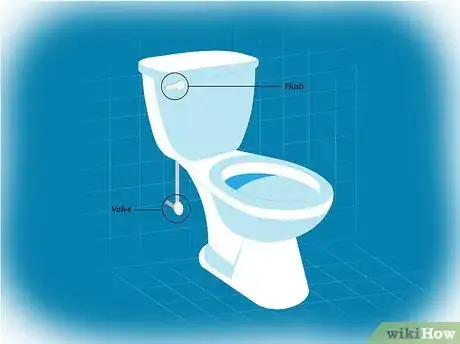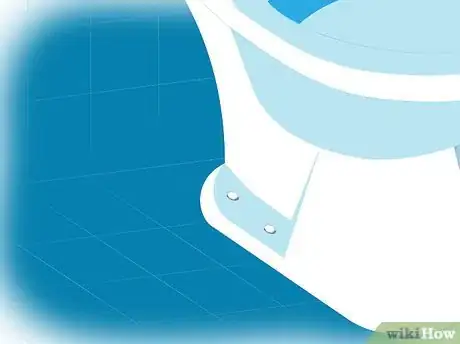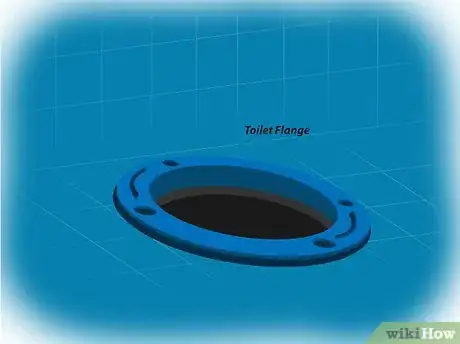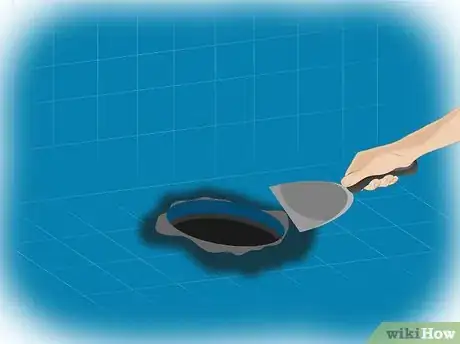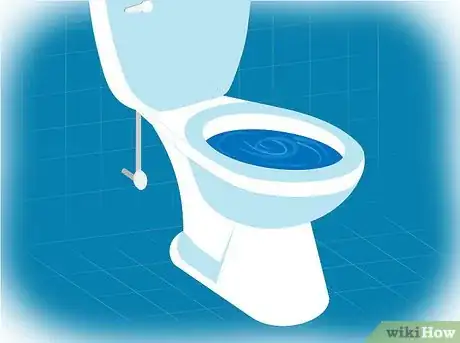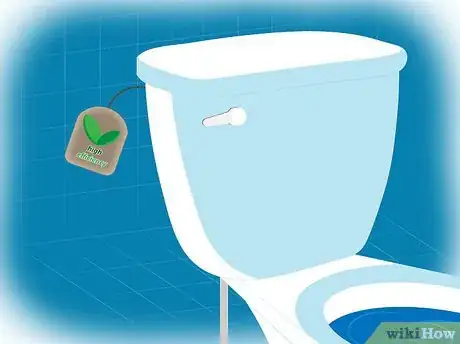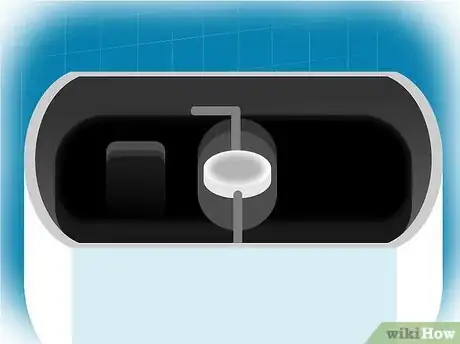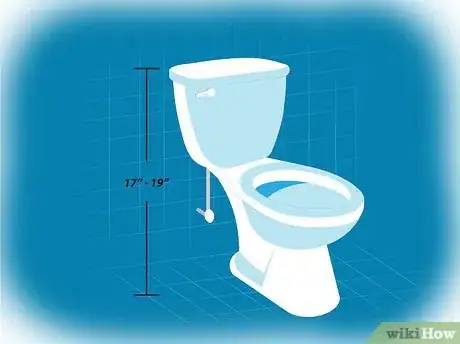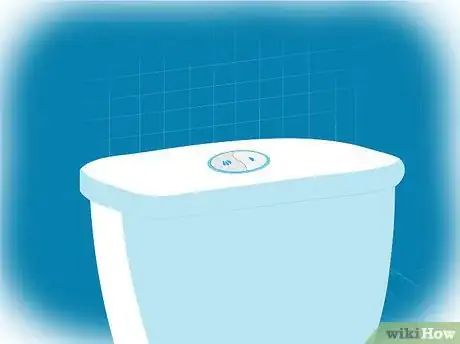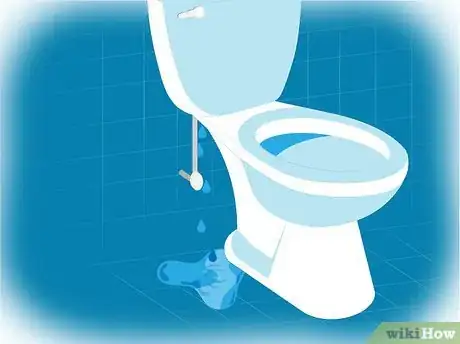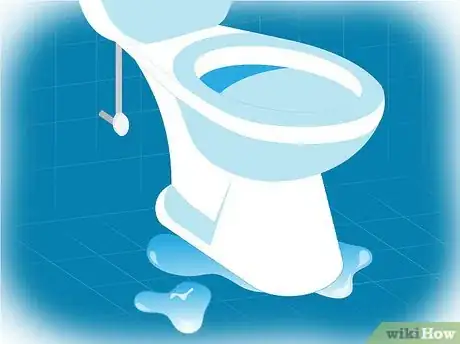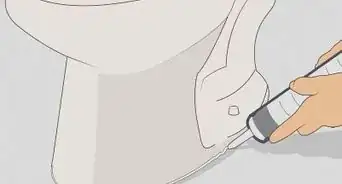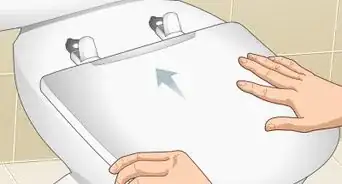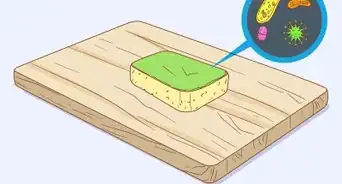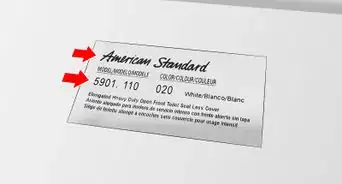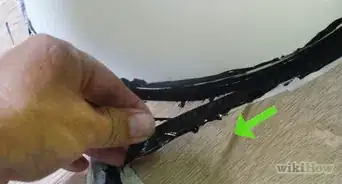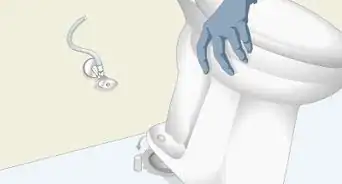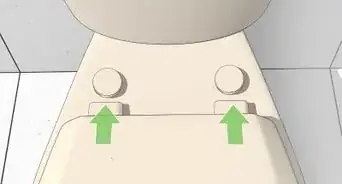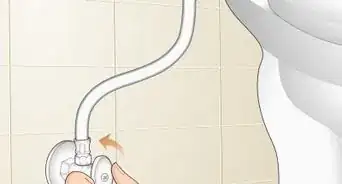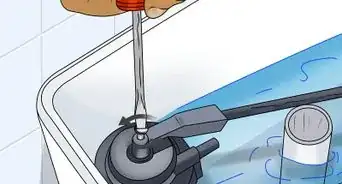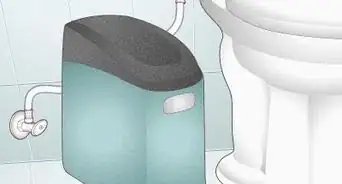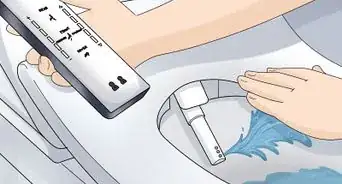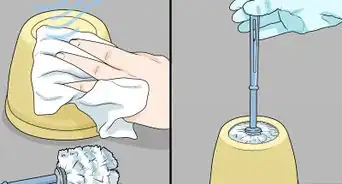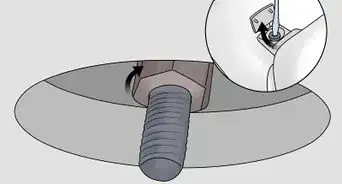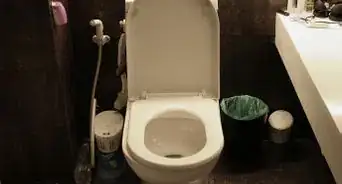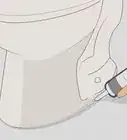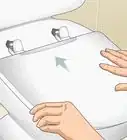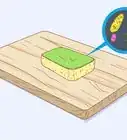This article was co-authored by Dave Jones. Dave Jones is a Professional Plumber and the Midwest Regional Vice President at Roto-Rooter Plumbing & Water Cleanup. In 1992, Jones joined Roto-Rooter as a drain service technician at the age of 18. Since then, he has risen through the ranks into positions of increasing authority. Dave served as general manager of Roto-Rooter’s Charlotte, North Carolina, and Atlanta, Georgia branches before being promoted to Contractor Area Manager and later to Regional Vice President. Dave holds Master Plumber Licenses in Pennsylvania, North Carolina, and Georgia.
This article has been viewed 61,784 times.
A leaky, broken or old toilet is enough of a pain; you don't need the added hassle of hiring someone to remove it. You can do it yourself with confidence following these step-by-step instructions.
Steps
Removing the Toilet
-
1Get rid of the water. Begin by turning off the shutoff valve on the water supply line. Then flush the toilet several times to remove all the water from the tank and the bowl. Disconnect both ends of the water supply tube at the shutoff valve and at the toilet tank.[1] [2]
- If you have a quarter-turn ball valve, you'll only need to turn the valve a quarter of a turn, but older gate valves may require several turns before they're closed.[3]
- You want the toilet and tank to be as dry as possible before you remove it, so go a step further and use a sponge to soak up any water that's left after you flush.
-
2Take off the tank. Use a ratchet wrench or a basin wrench to remove the nuts from the mounting bolts that hold the tank onto the bowl. There will be one on each side of the tank, and there may even be a third one in the middle. Gently lift the tank off the bowl.[4]
- Once the tank is off, remove it from the bathroom or set it to the side or somewhere it won't be in the way.
Advertisement -
3Remove the floor bolts. Pry the trim caps off the floor bolts. Use an adjustable wrench to remove the nuts from the floor bolts.[5] [6]
- If you can't get the nuts off, try spraying them with penetrating oil. If you're still unsuccessful, you may have to use a nut splitter or cut the bolts with a hacksaw.
- It's a good idea to wear protective rubber or latex gloves for this.[7]
-
4Break the seal. There is a wax ring under the toilet that seals the bottom of the bowl to the end of the drain pipe (called the toilet flange). Straddle the toilet and gently rock it from side to side in order to break the seal. Once you do, lift off the bowl and place it nearby on its side.
-
5Conduct some clean up. Using a putty knife, scrape away the old wax from the toilet flange and from the bottom of the toilet. Throw the old wax in a bucket line with a plastic bag. Clean the flange with a stiff wire brush.[10]
-
6
Choosing a New Toilet
-
1Check for flush performance. Manufacturers may choose to have their toilet models tested by Maximum Performance (MaP) a group that advocates for better toilet flush performance in North America. The group maintains a public database of about 2,500 toilets that have undergone voluntary testing my MaP. Access the site to see the flush performance of toilet models you may be considering.
- MaP has set removal of 350 grams (12.3 oz) of waste per flush as the minimum acceptable level and the U.S. EPA's WaterSense Program sets the same minimum for their tank-type toilet specification.
- Since participation in this testing program is voluntary, you won't find information for all toilets in the database.
-
2Decide if you want a high-efficiency model. A high-efficiency toilet (HET) is one that uses 1.28 gallons (4.8 liters) of water per flush. Since a toilet accounts for one-third of your home water use, these can be a great way to save money on your water bill. On the downside, staining and clogging can be an issue with some models, so do your research.
- Check with your water utility company to see if they offer a rebate or some form of financial incentive if you install a high-efficiency toilet.
- High-efficiency toilets earn the U.S. EPA's WaterSense label, a designation that means among other things that they perform as well or better than their less efficient counterparts and are 20 percent more water efficient than average products in that category.
-
3Investigate pressure-assist toilets. These toilets use a separate tank to hold water under pressure. When you flush, this water is released at high velocity and removes waste more thoroughly. These toilets are more expensive and noisier than traditional models and could present a challenge should they need parts or need to be repaired.
-
4Consider your need for comfort. Standard toilet bowl height is 15", but you can purchase a toilet with a bowl height between 17" to 19" These toilets, made to comply with the Americans with Disabilities Act, are easier on the back and the knees and more comfortable for older and/or taller adults. Their added height comes with a bit of a higher price ($50-$100) and small children or shorter adults may find them more difficult to use.
-
5Declare a dual. Dual-flush toilets, available in both gravity and pressure-assist models, use 25 percent less water. They cost a couple of hundred dollars more than other models, but you'll save money in the long run. They're available only in a limited number of colors and style options.
Fixing a Toilet
-
1Fix a slow toilet.Just because your toilet is running slow doesn't mean you have to replace it. There are things you can do to strengthen a weak flush.
-
2Fix a leaky toilet tank. A toilet tank can leak for several different reasons. Investigate a bit to learn if it's something you could easily fix on your own.
-
3Fix a running toilet.If you're considering replacing your toilet because the water simply won't stop running, there are a few fixes you can try to correct the problem.
-
4Repair a leaky seal.If you see a pool of water around the base of your toilet and there's no leak from the tank, that indicates that your toilet is fine--it's the seal that needs replacing.
Community Q&A
-
QuestionHow do I get the remaining water out of the bowl before removing it from the floor seal?
 Community AnswerUse a rag or sponge to soak and squeeze out the water in the sink until the bowl is empty. Or, suck it out with a wet-dry or shop vacuum, household bag-less vacuum (make sure you don't overfill), or an extractor (large syringe).
Community AnswerUse a rag or sponge to soak and squeeze out the water in the sink until the bowl is empty. Or, suck it out with a wet-dry or shop vacuum, household bag-less vacuum (make sure you don't overfill), or an extractor (large syringe).
Things You'll Need
- Sponge
- Bucket
- Rags
- Ratchet wrench and sockets
- Wrenches
- Screwdriver
- Putty Knife
- Hacksaw (optional)
- Nut splitter (optional)
References
- ↑ Dave Jones. Master Plumber, Roto-Rooter Plumbing & Water Cleanup. Expert Interview. 13 December 2021.
- ↑ https://www.todayshomeowner.com/how-to-remove-and-replace-a-toilet/
- ↑ Dave Jones. Master Plumber, Roto-Rooter Plumbing & Water Cleanup. Expert Interview. 13 December 2021.
- ↑ http://www.planitdiy.com/how-to/plumbing/how-to-replace-a-toilet/
- ↑ Dave Jones. Master Plumber, Roto-Rooter Plumbing & Water Cleanup. Expert Interview. 13 December 2021.
- ↑ https://www.todayshomeowner.com/how-to-remove-and-replace-a-toilet/
- ↑ Dave Jones. Master Plumber, Roto-Rooter Plumbing & Water Cleanup. Expert Interview. 13 December 2021.
- ↑ Dave Jones. Master Plumber, Roto-Rooter Plumbing & Water Cleanup. Expert Interview. 13 December 2021.
- ↑ Dave Jones. Master Plumber, Roto-Rooter Plumbing & Water Cleanup. Expert Interview. 13 December 2021.
- ↑ http://www.planitdiy.com/how-to/plumbing/how-to-replace-a-toilet/
- ↑ https://thriftdiving.com/how-to-remove-your-toilet-by-yourself/
- ↑ Dave Jones. Master Plumber, Roto-Rooter Plumbing & Water Cleanup. Expert Interview. 13 December 2021.
- http://www.familyhandyman.com/DIY-Projects/Plumbing/Toilets/tips-for-buying-a-toilet/View-All#step2
About This Article
To remove a toilet, start by turning off the shutoff valve for the water supply line, and flushing the toilet to remove all the water from the tank and bowl. Then, disconnect both ends of the water supply tube. Next, use a ratchet wrench to remove the nuts from the mounting bolts that hold the tank onto the bowl. After that, lift the tank off the bowl and use an adjustable wrench to remove the floor bolts. Finally, rock the bowl gently from side to side to break the seal on the wax ring, and remove it from the floor. For more tips, like how to seal the hole until you’re ready to install a new toilet, keep reading!
